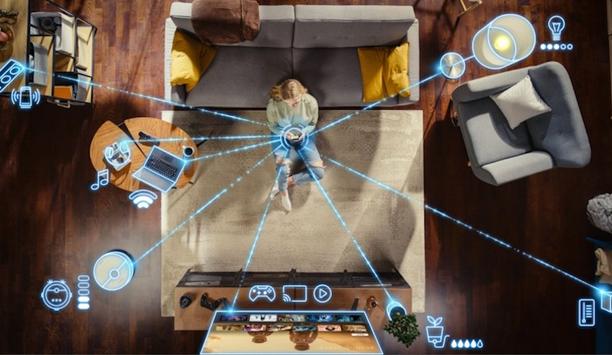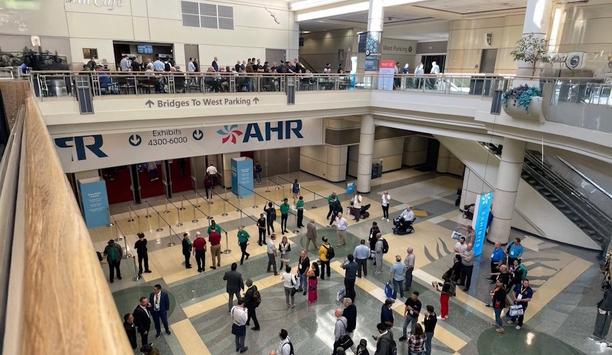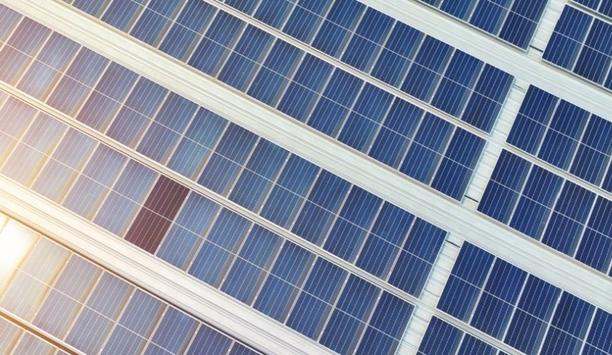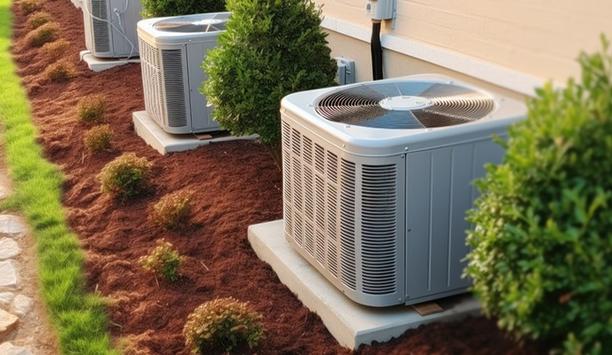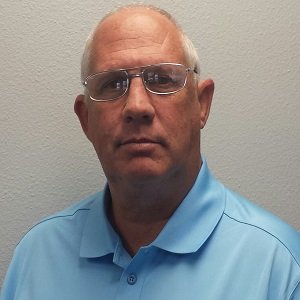HVAC Industry News
Installing HVAC equipment is not as simple as plugging in an appliance. Installers often face many hurdles, including complex system design, space constraints, accurate sizing and load calculation, and proper ductwork installation. But what are we forgetting? We asked our Expert Panel Roundtable: What is the most overlooked factor when installing HVAC systems?
Viessmann Climate Solutions (VCS) has combined with Carrier to become the core of Carrier’s newly formed business unit Residential and Light Commercial for European, Middle East and Africa. This business unit is now able to offer brands like Carrier, Toshiba, and Beretta next to the premium brand Viessmann, thus covering additional user segments with differentiated products at various price points. Climate system technology “The climate system technology of Viessmann Climate Solu...
Data centers play a pivotal role in supporting the flow of information across our digital economy. However, the transmission of large amounts of data also requires a lot of energy. Viewing data centers as potential heat sources offers an opportunity to use this otherwise wasted heat to warm nearby homes and businesses using technologies like heat pumps and heat networks. The approach will lower the environmental impact of these buildings filled with computer servers, and it will support the tr...
Does anyone still think that heat pump technologies for residential applications are ineffective in cold climates? If so, they are missing opportunities available through advancements in heat pump technology. New developments in heat pumps are significantly transforming the residential HVAC market. These advanced heat pumps can maintain 100% heating capacity at 0 degrees F and operate efficiently at low temperatures. Secondary heat sources These capabilities reduce the need for secondary hea...
In today's smart homes, traditional climate control meets modern automation and connectivity. Technologies such as smart thermostats, home automation platforms, sensors, zoned heating and cooling, and artificial intelligence are combining to yield new levels of comfort for homeowners who embrace the smart home concept. We asked our Expert Panel Roundtable: How is the changing smart homes market impacting HVAC systems?
The HVAC Industry gathered in Orlando for AHR Expo 2025, focusing on the latest advancements in technology. Attendees included contractors, manufacturers, engineers, system design professionals, facility managers, architects, wholesalers, and distributors. This year’s expo highlighted game-changing innovations, regulatory shifts, and emerging trends designed to enhance efficiency, sustainability, and connectivity. For HVAC professionals, these developments translate into practical soluti...
Certifications are official documents given by professional organizations that confirm a staff member has the necessary knowledge and skills needed to do a specific job. In the HVAC industry, certifications provide multiple benefits for various stakeholders. For technicians, certifications can demonstrate enhanced skills and knowledge, increase earning potential, improve job security, and promote greater credibility and professionalism. Certified technicians In the long run, using certified...
The U.S. Department of Energy (DoE) Commercial Heat Pump Accelerator program is designed to enhance building efficiency and electrification. Running from 2024 through 2027, the program aims to overcome adoption barriers, promote advanced heat pump technologies, and create sustainable solutions for HVAC professionals. Compared with conventional packaged rooftop units (RTUs) with natural gas heating, heat pump RTUs are estimated to reduce greenhouse gas emissions and energy costs by up to 50%. F...
Hydronics systems rely on water, steam, or water solutions to distribute heating and cooling throughout a building. They are inherently more eco-friendly than conventional alternatives. First and foremost, using water as a temperature regulation method is a natural choice. There is no carbon footprint involved in its creation, and there is no inherent danger in exposure to water in the event of a system failure. Water is more efficient at carrying heating and cooling loads than other technolog...
The COVID-19 pandemic has significantly impacted how we view indoor air quality and HVAC systems. Consequently, HVAC systems have undergone several improvements in the post-pandemic world. Systems today tend to have better filtration, increased ventilation, and advanced air-cleaning technologies, such as UV-C light and bipolar ionization. We asked our Expert Panel Roundtable: How have HVAC systems improved (including better indoor air quality) in the post-pandemic world?
Integrating technology, data, and a nationwide network of contractors and distribution centers, Motili seeks to transform how HVAC services are delivered. With a focus on sustainability, energy efficiency, and cost savings, Motili helps property owners and contractors achieve their goals while promoting a greener future for the HVAC industry. motili expansion Motili meets various industry needs, whether a property manager looking for streamlined HVAC solutions or a contractor seeking m...
Gaining early popularity in the 1970s, previous generations of heat pumps were only considered useful in mild climates. But today, modern heat pumps, especially variable-speed mini-split heat pumps, are reliable, sustainable, and used in various ways, including ways our parents and grandparents would never have thought of. New uses include she sheds, man caves, garages, tiny homes, sunrooms, and even boats. We spoke to Sean Gallagher, Regional Sales Manager, Eastern Massachusetts, Mitsubi...
The British Boiler Upgrade Scheme (BUS) is an essential initiative for building owners, security professionals, and HVAC experts aiming to reduce carbon emissions and energy costs. Designed to replace aging fossil fuel boilers with low-carbon alternatives, this United Kingdom government-backed scheme provides financial incentives that make upgrading more accessible. With rising energy prices and stricter environmental regulations, the program could benefit property investors and tenants while...
Housecall Pro, founded in 2013, seeks to transform how home service professionals manage their businesses. Their mission to "Champion Our Pros to Success" underlies a software platform that offers scheduling, dispatching, invoicing, payment processing, payroll, and customer management solutions. artificial intelligence (AI) In addition, the “AI Team Member,” using artificial intelligence (AI), provides specialized expertise through AI-powered coaches, customer service...
Johnson Controls’ Advanced Development Engineering Center (JADEC) in New Freedom, PA., about 25 miles from Philadelphia, highlights and demonstrates the company’s capabilities related to development, testing and manufacturing. The 357,000-square-foot facility is an advanced engineering and testing facility for water-cooled chillers, air-cooled chillers, air handlers, compressors, and heat pumps. Much of the development in the facility centers on advancements in a critical vert...
Achieving net-zero emissions will mitigate climate change and prevent the worst impacts of global warming. Net zero is the state in which the total amount of greenhouse gases emitted into the atmosphere is equal to the total amount removed. HVAC systems represent a large opportunity to impact how soon we can achieve net zero. We asked our Expert Panel Roundtable: What is the role of HVAC in achieving net-zero emissions by 2050?
TE Connectivity’s main product categories for the HVAC market are power interconnects, signal interconnects, magnet wire for motors, and heat-shrink tubing to seal against environmental factors. component materials The company works with HVAC original equipment manufacturers (OEMs) to solve challenges such as harsh environments, safety, and power and signal usage. Although components are a “small” element when an OEM assembles an HVAC system, their impact can be big. For exa...
Digitalization is the integration of digital technologies into everyday life. In the context of HVAC, digitalization refers to the use of digital technologies to improve the efficiency, performance, and control of heating, ventilation, and air conditioning systems. Considering that digitalization is a major trend relating to HVAC, we asked our Expert Panel Roundtable: How does the digitalization of HVAC enable adaptation to evolving technologies and newer applications?
Renewable energy is derived from natural sources that are replenished at a higher rate than they are consumed. Examples include sunlight, wind, water, and geothermal heat. The use of renewables provides environmental benefits (such as lower greenhouse gas emissions), economic advantages, sustainability, and better energy security. As a significant consumer of energy, HVAC is well-positioned to promote greater usage of renewable energy sources. We asked our Expert Panel Roundtable: How can the HV...
SNAP Rule 26 marks an important milestone in the transition from commercial refrigeration to new refrigerants. The rule lists refrigerant substitutes that provide a spectrum of technological solutions to meet required performance, global warming potential (GWP), safety, and environmental standards. SNAP stands for Significant New Alternatives Policy, a program by the U.S. EPA (Environmental Protection Agency) under the Clean Air Act. In general, the program aims to evaluate and regulate...
Humidity can influence employee health and productivity in the workplace. Humidity, temperature, and ventilation all work in concert to create a healthy indoor environment that supports overall occupant well-being. “Dry indoor air can cause discomfort in the form of dry skin, eyes, and throat for staff and visitors,” says Jennifer Montville, Director of Marketing at DriSteem, a manufacturer of humidification systems. Air-related health issues “There are real costs associate...
It takes a proliferation of data centers to serve the growing computing needs of the Internet, and all those servers churning away create plenty of heat. Might some of that heat be harnessed and used for residential or commercial heating? The emergence of district heating systems, which provide thermal energy to multiple buildings from a single source, demonstrates the approach has broad possibilities. Air-cooled chillers and air-handling units used to cool data centers are like the technologi...
Recently, nine states pledged to accelerate the transition to clean buildings in their states, including a goal of deploying heat pumps to make up 65% of residential heating, cooling, and water heating by 2030. California, Colorado, Maine, Maryland, Massachusetts, New Jersey, New York, Oregon, and Rhode Island signed a memorandum of understanding in February outlining their collective efforts to accelerate the deployment of clean technologies such as heat pumps in new and existing homes. ...
The flammability of the new class of low-GWP refrigerants is a source of misunderstanding and unnecessary anxiety among contractors who will be working with the newer materials, which must be used by HVAC equipment manufactured beginning Jan. 1, 2025. A2L refrigerants The newer A2L refrigerants, specifically R-454B, perform similarly to previously used materials such as R-410A, and flammability is so mild as to be almost negligible. What’s needed is more education to make co...
An expansive construction boom is underway in Saudi Arabia, amplified by the Saudi Vision 2030 initiative promoting global engagement, enhanced quality of life, and economic diversification beyond petroleum. Mega-projects pioneering the way include The Line, a linear smart city that is only 200 meters (220 yards) wide, towers 500 meters (550 yards) above sea level, and stretches 170 kilometers (105 miles) from the Neom 26,500-square-kilometer (10,200 sq. miles) urban area across desert valleys...
The idea of Energy as a Service involves shifting the traditional business model from selling energy as a commodity to providing a comprehensive package of goods and services to address a customer’s energy use and management. Rather than selling energy, the approach encompasses complete stewardship of a company’s energy needs in exchange for a monthly fee. Because 40% or so of a company’s typical energy needs are related to heating and cooling systems, implementing Energy as...
AHR Expo 2024 was abuzz with activity, befitting a dynamic industry in the throes of change. Industry developments such as electrification and the refrigerant transition render business opportunities on the AHR Expo show floor, where exhibitors display a determination to meet the challenges and thrive in the process. Walking from booth to booth during the three-day show in Chicago, I saw the best the HVAC industry has to offer, up close and personal. Innovation and adaptability are the w...
Businesses in the HVAC market were high-profile participants at the COP28 conference in Dubai. Several big HVAC companies had a presence at the conference, and the industry’s technologies are an important tool to achieve the conference’s stated climate goal of net-zero global greenhouse gas emissions by 2050. COP28 The Conference of Parties of the United National Framework Convention on Climate Change (COP28) took place Nov. 30-Dec. 12 in Dubai. Some 35,000 people were involved in...
Revised building codes, based on model “I-Codes” developed by the International Code Council (ICC), are being widely adopted to allow A2L refrigerants to be used in comfort air conditioning applications. Previously, the use of A2L refrigerants, which are “mildly flammable,” was not allowed by building codes in force in 2021 and before because of safety concerns. benefits of A2Ls However, the benefits of using A2Ls instead of refrigerants with higher global...
There is a severe shortage of skilled technicians in the HVAC trade, reflecting an urgent need to attract more employees to careers in HVAC. The estimated 80,000 unfilled positions across the United States are the result of multiple trends, from an aging workforce to a lack of training and education. There is also a public perception problem: HVAC jobs are often seen as dirty, sweaty, and unskilled positions. But how can the industry address the problem? We asked our Expert Panel Roundtable: How...
You may also be interested in
From A To L: Your A2L Transition Guide
DownloadLeveraging Radiant And Hydronics To Help Achieve Decarbonization Goals
DownloadSealed Connectors In Harsh Environments
DownloadPowering And Cooling Next Generation Data Centers
DownloadDebunking Myths To Promote A Bright Future For Heat Pumps
Download



